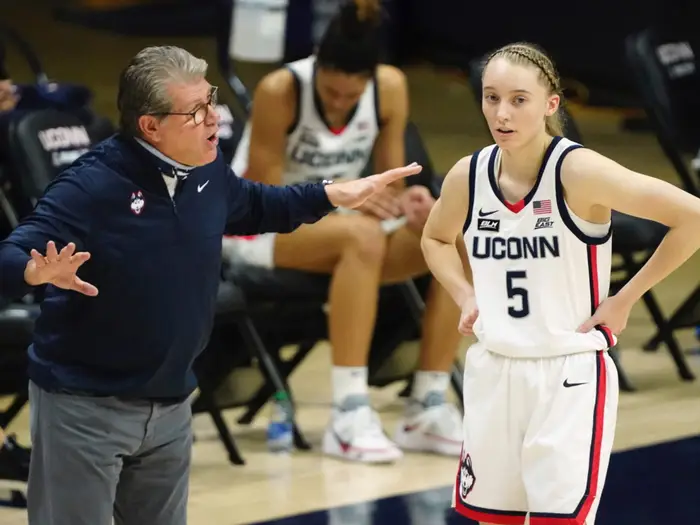Long overshadowed by its men’s counterpart, NCAA women’s college basketball has surged in popularity, thanks to transcendent stars like Paige Bueckers and Caitlin Clark. Yet, despite its rise, disparities remain, starting with the fact that its crown jewel, the NCAA tournament, is structured in a way that limits the growth of the sport.
This year, women’s college basketball has fought hard to sustain all of the newfound attention and inroads to equality. Much of this surge in popularity can be credited to Caitlin Clark, a once-in-a-lifetime talent, who shattered countless records over her successful four-year career at the University of Iowa. Clark’s final collegiate game, the 2024 national championship in which her school lost to the undefeated South Carolina Gamecocks, drew 18 million viewers—double the 9 million who tuned in for the men’s title game. This highlights not just her influence on women’s basketball, but her broader impact on sports and society.
With the three-point shooting queen now in the WNBA, the likes of Bueckers and USC phenom JuJu Watkins have combined to fill the superstar void Clark left behind. While the play and competitiveness on the court is increasing, the NCAA is still holding women’s college basketball back from its full potential.
Annually, when the calendar turns to March, college hoops fans around the country eagerly anticipate the NCAA Division I men’s and women’s basketball tournaments. Both tournaments begin with 68 teams, half of which automatically qualify as conference champions and the rest receive at-large bids.
However, while the men play all their games at neutral locations, the women’s tournament begins differently. The top four seeds in each region of the women’s bracket host the first and second round games at their on-campus arenas. This allows the schools to profit and gives its students and local fans another chance to see their teams in action.
The problem begins at the women’s Sweet 16. Three years ago, the NCAA condensed these games into two neutral locations believing this would attract more general fans to attend the games by having eight games in each city instead of four. This year, the two regionals are being held in Spokane, WA and Birmingham, AL, two cities that are difficult for most fans to reach.
The University of Connecticut and Louisiana State University had to make the cross-country trip to Spokane, something that their coaches Geno Auriemma and Kim Mulkey were not too pleased with, considering the quick turnaround with the Final Four in Tampa, FL a few days later.
“Half the country has no chance to get to a game in person. But you’re making billions off of TV. Well, actually you’re not; that would be the men’s tournament,” Auriemma said in a press conference a day before his No. 2 seed Huskies faced No. 3 seed Oklahoma in Spokane. “So yeah, there’s a lot of issues that they need to fix. And again, we could get our ass beat tomorrow and that won’t change my feelings.”
If the NCAA really wants to continue growing women’s college basketball, they should restore the four regions format for the Sweet 16 and Elite Eight contests, making it easier for more fans to attend these exciting games in-person. Plus, even with the men’s tournament occupying four locations, there are enough cities in America eagerly willing to host tournament games to bring live sports to town and receive a vast financial windfall.
Polly Vaughn, a former women’s college basketball player and a longtime fan, echoed this sentiment.
“I agree that they should be regional sites near the top seeds because it does not make sense to make these kids travel across the country and they are still in school.. it’s just ridiculous,” Vaughn said. “There were a lot of empty seats at the Spokane games and I think if you could get hometown fans to be able to go to these games, those seats would be taken.”
Experienced women’s basketball journalist Michelle Smith McDonald has seen firsthand how women’s collegiate sports, specifically basketball, has evolved over the years as the level of play has increased.
“Validation for women athletes based on physical appearances happens a lot in women’s basketball,” McDonald said. “I think we are moving from validation to appreciation in women’s sports, but there is a long way to go.”
The more accessible these high-stakes women’s college basketball games are for fans, the more appreciation there will be for the product on the court. If the NCAA truly values the future of women’s basketball, it must prioritize improving tournament accessibility and equity—not just for fairness, but to ensure the sport reaches its full potential.


